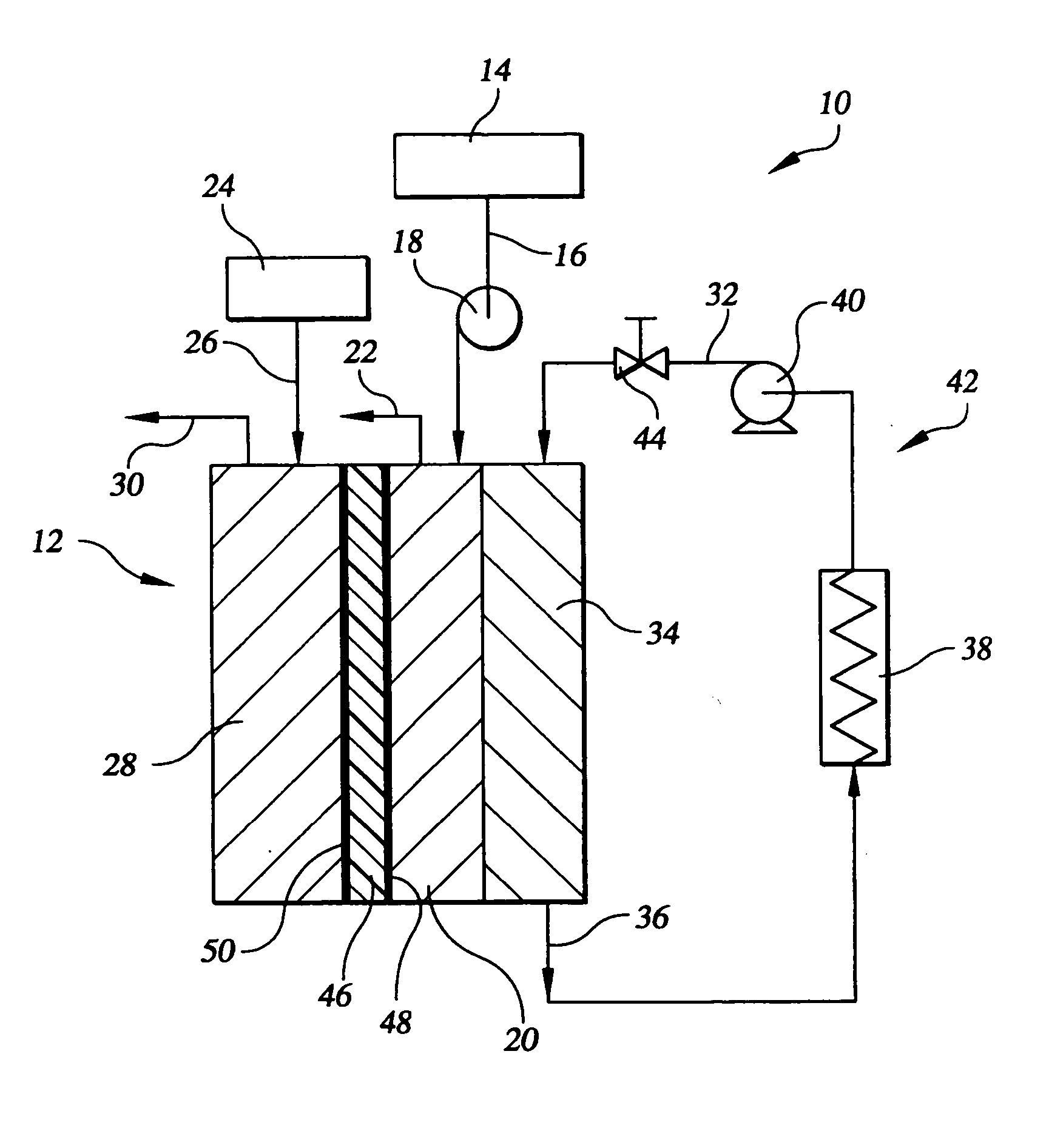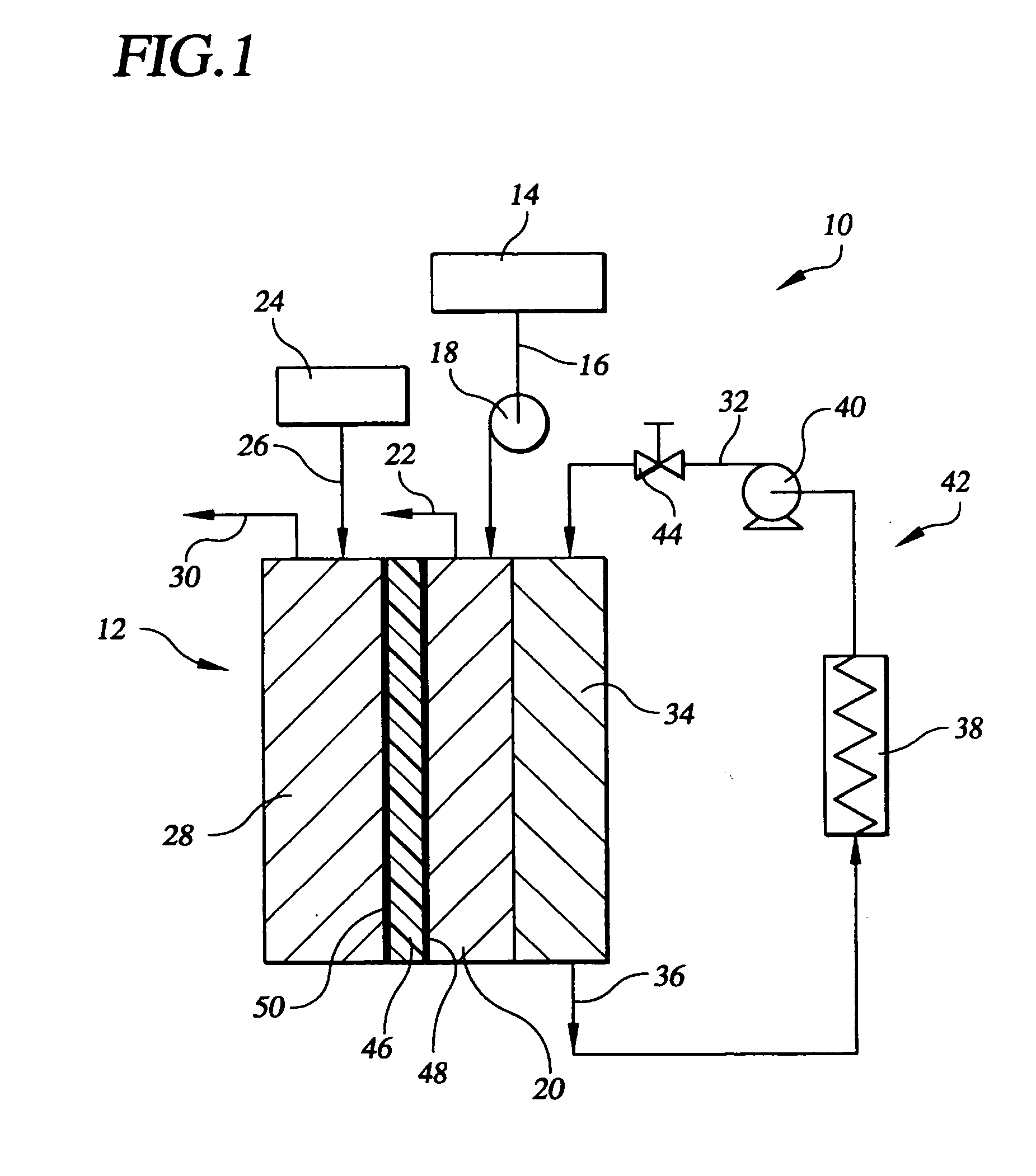Fuel cell with passive water balance
a fuel cell and water balance technology, applied in the field of fuel cells, can solve the problems of complex manufacturing effort and cost, especially difficult to achieve water balance requirements for fuel cells used in transportation vehicles, etc., and achieve the effect of minimizing the quantity of fuel cell water and minimizing the need for active circulation
- Summary
- Abstract
- Description
- Claims
- Application Information
AI Technical Summary
Benefits of technology
Problems solved by technology
Method used
Image
Examples
Embodiment Construction
[0015] Referring to the drawings in detail, a simplified fuel cell power plant 10 is shown in FIG. 1 including at least one fuel cell 12 that is constructed in accordance with the present invention and is generally represented by the reference numeral 12. The fuel cell 12 produces electrical power from first and second reactant streams, such as oxygen containing oxidant and hydrogen containing reducing fluid reactant streams, as is known. The first reactant such as an oxidant is directed from an oxidant supply 14 through an oxidant supply line 16 that may include a blower 18 into a first reactant or cathode flow field 20 of the fuel cell 12 and out of the fuel cell 12 through an oxidant vent 22. Similarly, a second reactant such as a reducing fluid is directed from a fuel supply 24 through a fuel supply line 26 into a second reactant or anode flow field 28 of the fuel cell 12 and out of the cell through a fuel vent 30.
[0016] The power plant 10 may also direct a coolant stream such ...
PUM
| Property | Measurement | Unit |
|---|---|---|
| freezing temperature | aaaaa | aaaaa |
| electrical current | aaaaa | aaaaa |
| cross-flow length | aaaaa | aaaaa |
Abstract
Description
Claims
Application Information
 Login to View More
Login to View More - R&D
- Intellectual Property
- Life Sciences
- Materials
- Tech Scout
- Unparalleled Data Quality
- Higher Quality Content
- 60% Fewer Hallucinations
Browse by: Latest US Patents, China's latest patents, Technical Efficacy Thesaurus, Application Domain, Technology Topic, Popular Technical Reports.
© 2025 PatSnap. All rights reserved.Legal|Privacy policy|Modern Slavery Act Transparency Statement|Sitemap|About US| Contact US: help@patsnap.com



